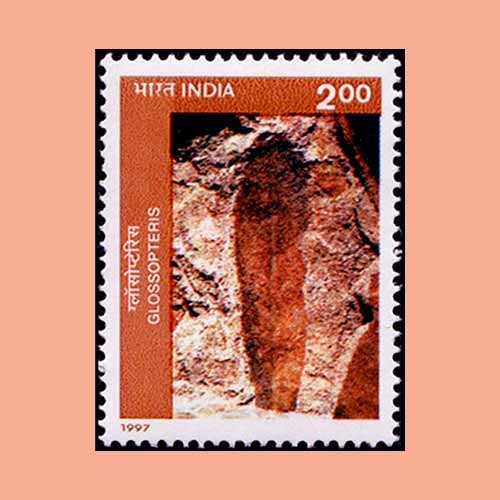Science and Technology on Indian Postage Stamps-2
2025-11-05 Wed
In continuation of the stamp series issued by India Post on 11 September 1997, to celebrate the 50th anniversary of the Birbal Sahni Institution of Palaeosciences (BSIP), another stamp features the fossil of a tongue-shaped leaf called Glossopteris. These fossils represent a unique group of extinct vascular plants from the Permian period, approximately 250-280 million years ago. During this era, the Indian subcontinent was situated south of the Equator, near the South Pole, as part of the extensive landmass known as Gondwanaland, which also included South America, Antarctica, Africa, and Australia. Notably, the vegetation dominated by Glossopteris played a significant role in the formation of coal reserves found in peninsular India.In 1920, the collaborative research of Albert Charles Seward and Professor Birbal Sahni, entitled ‘Indian Gondwana Plants: A Revision,’ marked a pivotal moment in the development of Indian geology and palaeobotany. In his research work, Professor Sahni has provided a comprehensive description of Glossopteris and delineated the differences between the flora of India and Australia in comparison to that of China and Sumatra.
Moreover, the BSIP is in the process of constructing a new building whose architectural design is inspired by the Glossopteris leaf, symbolizing the institute’s commitment to paleobotanical research. This development is taking place within its campus in Lucknow, Uttar Pradesh.
For further information regarding previous issue, please refer to Science and Technology on Indian Postage Stamps-1
Latest News
-
Science and Technology on Indian Postage Stamps-1
2025-11-05 WedPalaeobotany is the scientific discipline dedicated to the study of fossilized plants and their hist...
-
Copper Double Falus of Malwa Sultan Ghiyath Shah
2025-11-05 WedMalwa Sultan Ghiyath Shah issued copper coins in two different weight standards: 80 rati series and ...
-
Malwa Sultan Ghiyath Shah's Silver One-Eighth Tanka
2025-11-03 MonGhiyath Shah was the ruler of the Malwa Sultanate. The son of Mahmud Khalji I, he had already govern...
-
Malwa Sultan Ghiyath Shah Silver Coinage
2025-10-31 FriMalwa Sultan Ghiyath Shah issued two types of silver coin varieties: special issues and normal issue...
-
Commemorative Coin to mark the 200th anniversary of Rani Chennamma's victory at Kittur.
2025-10-28 TueKittur Rani Chennamma was an Indian queen of Kittur, a princely state in Karnataka. She was the firs...

